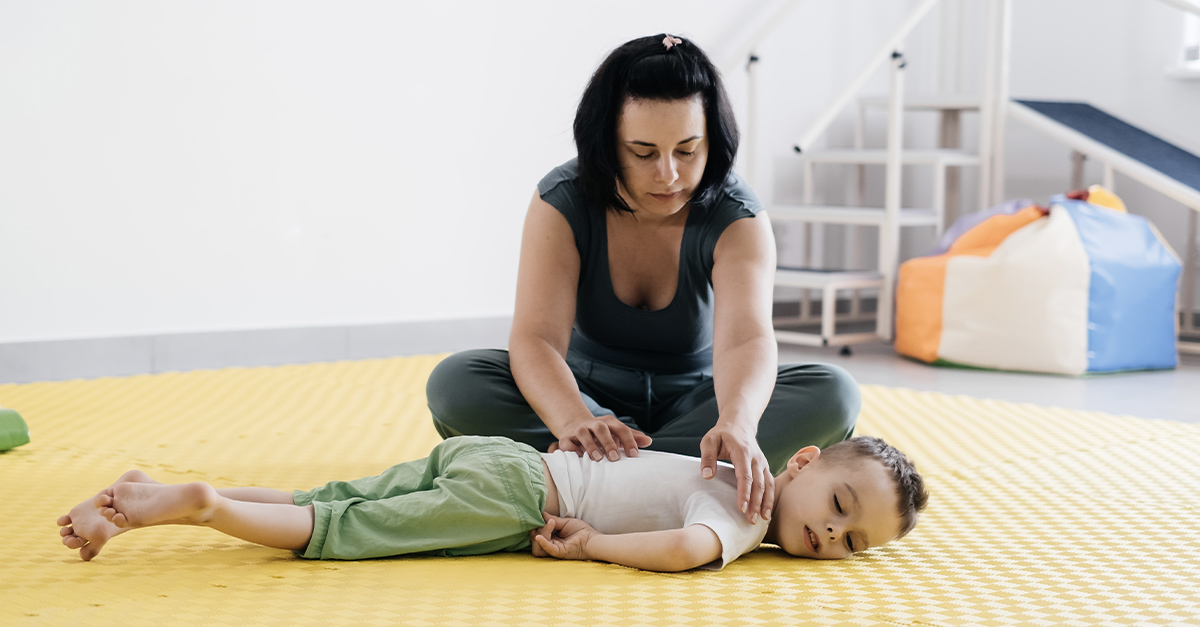Is Cerebral Palsy Painful? Understanding and Managing Pain

Cerebral palsy (CP) is a group of neurological disorders that can cause uncomfortable symptoms, such as stiff muscles, contractures, and involuntary movements. Those with the condition may also have chronic or intermittent pain.
According to a 2020 study from the medical journal BMC Neurology involving 3,545 children and adolescents with cerebral palsy, 42.5% reported experiencing some type of pain.
Pain can greatly affect a child’s independence and overall development. Children with chronic cerebral palsy pain may perform poorly in school compared to those without pain, according to the American Academy for Cerebral Palsy and Developmental Medicine.
Some may be able to easily manage their pain, while others may need more targeted treatment. Learn more about cerebral palsy, pain, and treatment options below. You can also download our free Cerebral Palsy Guide to get comprehensive insights on managing life with CP.
Types of Cerebral Palsy and Pain
Cerebral palsy is caused by damage to specific regions of the brain, resulting in different types of the condition. Each type of cerebral palsy can bring a variety of CP symptoms, some of which can be painful.
For example, spastic cerebral palsy and athetoid cerebral palsy patients may experience permanently tightened muscles and suffer from pain in the legs, arms, shoulders, hips, neck, and back.
Ataxic cerebral palsy patients may develop pain in similar areas due to their poor posture and balance.
A 2020 study examined cerebral palsy pain in patients ages 4 to 18 and found:
- About two-thirds said their pain affected the performance of daily activities.
- Female patients had a higher risk of experiencing cerebral palsy pain.
- Patients with poor Gross Motor Function Classification System scores (which tests overall mobility) were more likely to have pain.
- The feet and lower legs were the most common regions for pain, followed by the hip and thigh area.
Cerebral palsy patients may also be at higher risk of headaches, dental problems, and gastrointestinal issues that can cause additional pain.
How to Tell If Your Child Is In Pain
Parents should ask children with cerebral palsy if they’re experiencing any pain so treatment can be sought to ease symptoms.
If your child is too young or unable to communicate, several signs may signal they are in pain.
Signs your child may be experiencing cerebral palsy pain include:
- Crying
- Decreased overall activity levels
- Fidgeting
- Increased irritability
- Moaning
- Reduced sleep
If your child shows signs of discomfort, contact their cerebral palsy specialist or pediatrician. The sooner you tell a medical professional, the sooner your child’s pain can be relieved.
Cerebral Palsy Pain in Adults
While some children do not experience pain alongside their cerebral palsy symptoms, other patients can begin to experience cerebral palsy pain when they reach adulthood.
Around 75% of adults with cerebral palsy experience chronic pain, according to the American Academy for Cerebral Palsy and Developmental Medicine.
Chronic cerebral palsy pain can cause adults to experience a decreased quality of life and reduced independence. Chronic pain can also lead to issues with walking, as well as other co-occurring conditions like depression and anxiety.
Cerebral Palsy Pain Relief Options
Cerebral palsy pain can greatly impact a child or adult’s everyday routine. Thankfully, there are several ways patients can manage symptoms and prevent chronic cerebral palsy pain.
Treatment for cerebral palsy pain focuses heavily on relieving painful symptoms and helping the patient regain movement of the body.
Some treatment methods for cerebral palsy pain include:
- Exercise: Daily movement like stretching or walking can help maintain muscle strength and flexibility to prevent spasticity.
- Medication: Severe pain can be eased with baclofen (muscle relaxer), ibuprofen, acetaminophen, aspirin, and more.
- Physical therapy: Professional therapists can help children improve overall mobility to prevent pain.
- Surgery: Often used as a last resort for severe pain, surgery can help loosen extremely tightened muscles and joints for pain relief.
It is important to always consult with your child’s specialist about what treatments will be best to relieve your child’s pain.
CBD for cerebral palsy is being explored as another option for pain management. Initial findings show a connection between CBD oil (derived from cannabis) and the reduction of inflammation and seizures without any psychoactive effects. However, researchers are continuing to explore if this is a good option for cerebral palsy patients.
Staying on top of physical therapy, medications, and other treatment options may help your child manage their chronic pain into adulthood and live a long, happy, independent life.
Get Help With Your Child’s Cerebral Palsy
Navigating cerebral palsy can be challenging, especially if your child is suffering from disruptive pain. Unfortunately, many cases of cerebral palsy and pain are linked to medical negligence. Understanding the underlying causes of your child’s condition and their pain can help your family access the support they need.
Thankfully, there are people and organizations ready to help. At Cerebral Palsy Guide, we have labor and delivery nurses on staff who can help families get answers about how their child’s CP may have developed and steps to take moving forward.
If you think medical negligence might be responsible for your child's cerebral palsy and pain, financial help could be available through a birth injury lawsuit. For more information, call us at (855) 220-1101 or fill out our contact form.
